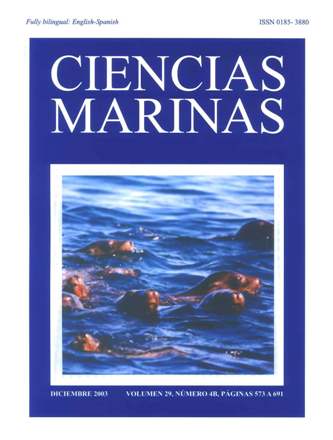Effect of dietary protein level and commercial feeds on growth and feeding of juvenile common snook, Centropomus undecimalis (Bloch, 1792)
Main Article Content
Abstract
Preliminary results of the effects of different dietary protein levels and commercial feeds on growth and feeding of juvenile common snook, Centropomus undecimalis (Bloch, 1792), were obtained under controlled laboratory conditions in two experiments. In the first experiment (60 days), juveniles (initially 2.9 g) maintained at 26.6ºC were fed one of four isocaloric experimental diets containing different protein levels (diet A = 28.8%, diet B = 40.4%, diet C = 53.4%, and diet D = 65.8%). Shrimp-, soybean-, and fish-meal were used as protein sources. Best growth, specific growth rate, and feed conversion ratio were obtained with diets B, C, and D. There were no significant differences (P > 0.05) among these three treatments. Protein efficiency ratio decreased as the level of dietary protein increased and was highest for fish fed diet A. In the second experiment (65 days), the effects of three different commercial pellets (for tilapia, catfish, and trout) and diet C were determined on snook (initially 22.7 g) at 29.1ºC. There was no significant difference in fish weight gain between diet C and trout pellets. Significantly higher (P < 0.05) weight gain was achieved with diet C and trout pellets compared with that of fish fed the tilapia and catfish pellets. Specific growth rate and feed conversion ratio were best with diet C, and significant differences among all treatments were obtained. Protein efficiency ratio for fish fed diet C and trout and tilapia feeds was not significantly different. The results confirm the snook's ability to feed on pellets, its capability to adapt to dry feeds, the potential of commercial feeds for raising snook, and its relatively high dietary protein requirement.
Downloads
Article Details
This is an open access article distributed under a Creative Commons Attribution 4.0 License, which allows you to share and adapt the work, as long as you give appropriate credit to the original author(s) and the source, provide a link to the Creative Commons license, and indicate if changes were made. Figures, tables and other elements in the article are included in the article’s CC BY 4.0 license, unless otherwise indicated. The journal title is protected by copyrights and not subject to this license. Full license deed can be viewed here.

